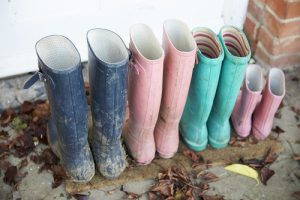Support and strategies for children with Learning Disabilities /ASD/ Attachment difficulties to help them cope with COVID-19 Isolation.

It has been an extremely difficult time for children and families over the last few months, with school closures and advice to self-isolate and socially distance ourselves from our friends and family.
Your normal structure and routine has most likely gone out of the window. The following information aims to support parents of children with an ASD (Autistic Spectrum Disorder), learning difficulties or Attachment difficulties during this tricky time and will hopefully make things a little more manageable for you all.
 Structure and routine – why is this so important?
Structure and routine – why is this so important?
When your world is very chaotic and confusing, there is a lot of uncertainty, which can often lead to anxiety. Children with ASD, a Learning Disability or Attachment difficulty often require a very concrete, literal and predictable world to feel safe and secure. Something can have a specific meaning in one situation and mean something very different in another. For this reason, many children have a strong need to control all activity and interaction around them. To help deal with this insecurity and anxiety, we have to decrease the uncertainty in their lives. The following strategies may help you do just that.
Build structure into your daily routine.
The more structured and predictable the daily routine is, the less uncertainty there is for the child.
Use of Alarms
Set different alarms throughout the day and keep the same ones every day to create a routine. Use different songs to mark different points in the day. E.g. start the morning routine with a good morning upbeat song and end the day with calming and relaxing music.
Visual Schedules
If and where possible, provide visual (pictures or written) schedules so children can see what is coming up next and what they are doing. This provides predictable order to their day. These visual schedules provide a nice detailed path to follow. It lets them know what to expect and when to expect it. This alone can drastically reduce anxiety in many children. A visual schedule uses pictures and symbols to demonstrate what activities will occur and in what order. We all tend to thrive on routines and children with additional needs and attachment difficulties especially respond positively to having structure. Structure enables them to be able to organise and predict events that will be occurring throughout the day/week, this can help to reduce anxiety levels. When feeling anxious it can be difficult to take in and hold onto any verbal information so having things presented in a simple visual format can also help to relieve this anxiety. Visual schedules can be used to map out the activities of a day or even a whole week for a child, or can simply be used to show the process of a single activity such as brushing your teeth or getting ready for bed. PECS (Picture Exchange Communication System) can be used to create your visual schedule – your child Support and strategies for children with Learning Disabilities /ASD/ Attachment difficulties to help them cope with COVID-19 Isolation may be used to using these at school.
You can download or purchase these from various sites. You can also make your own by using your own photographs of places you regularly visit with your child. It may be useful to have the pictures on velcro or stuck down with blu-tac so that your child is able to remove it from the schedule once the activity has been completed.
Transitioning between Tasks
Children with ASD, a LD or Attachment difficulty often have difficulty switching their brain activity between different tasks. They do much better if they have warnings or reminders when the one activity is ending and another is beginning, especially if the current activity is a favourite activity. To ease transition difficulties try to ensure that the child always knows what will be coming up next (e.g. watch TV then bath) give the child five, three, and one-minute reminders that the activity is going to end and they will move on to the next activity. You might find using timers helps. This way their brain is prepared for what is coming up next, and the reminders help bridge the transition. This is particularly useful for limiting time spent on tablets – there are some apps available that allow you to control this from your phone, e.g. Screentime.
Making a (Flexible) Schedule

One of the secrets that makes school days work so well is a routine.
Children are used to following a schedule regardless of age. In times of heightened anxiety it can be comforting to know what is coming next and feel like there is a direction to your day.
Making a rough blueprint can help everyone feel more organised and purposeful. The most successful home schedules tend to be spacious and flexible with independent play/ learning/parent break times built in.
Below is an image of a sample schedule which you can use as a starting off point. Take what works and change what doesn’t to ensure your schedule is tailored to your family’s needs. Don’t get stuck in thinking you have to make up for everything that is being missed due to these changes, stay relaxed and do what you can. The most important thing is to be connected and look out for each other.
Before 9am
Wake Up Have some breakfast, shower, make your bed
Before 10.30am
Get outside Go in the garden, for a walk, get out of the house for a bit of time, take the dog for a walk
10.45am
Eat something Have a snack
11am-12.30pm
Do some learning Access lessons from school, use some revision books, read, access BBC Bite Size
12.30-1pm
Eat something It’s lunchtime
1-1.45pm
Play/Relax Go outside in garden, play computer, FaceTime a friend
1.45-3.15pm
Do some more learning Access lessons from school, use some revision books, read, access BBC Bite Size
3.15-5pm
Play/Relax Baking, Jigsaws, Painting or Drawing, Chat with friends
5.30pm
Eat something Have tea, help each other make food, lay the table, clean up
6.30pm
Relax Spend time together, play a game, watch a film or TV show you all like, spend time in room

